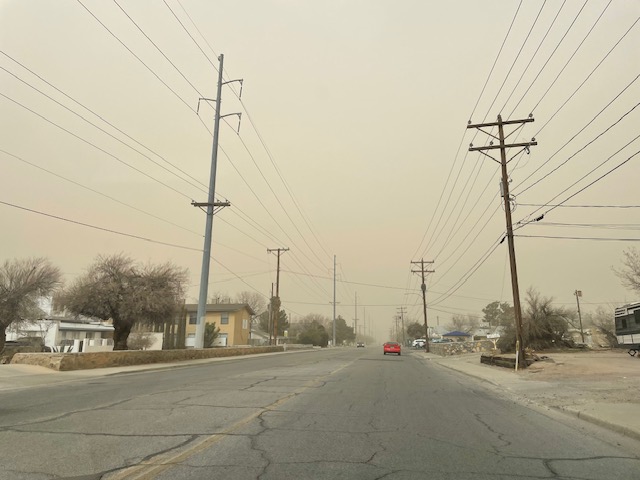-and-
“Dust storms may be common in our region, and the health risks they pose are significant,”
~Dr. Miranda Durham
Source: NM Environment Department
Image: Courtesy
SANTA FE – The New Mexico Environment Department and the Department of Health are advising residents statewide about potential health risks associated with dust storms, with particular emphasis for those living in Doña Ana and Luna Counties.

A combination of weather conditions, natural environment features, and human activity can contribute to high levels of windblown dust, or dust storms. High winds can carry large amounts of dust into the air from areas of dry, loose, and exposed soil. Dust storms are most common during the spring, especially after years of prolonged drought.
Doña Ana and Luna Counties typically average ten days a year when dust storms cause exceedances of the National Ambient Air Quality Standard for airborne particulate matter of 10 microns or less in size (also known as coarse particles), which is about one seventh the diameter of a human hair. This standard was developed to protect the public’s health and welfare.
“Dust storms may be common in our region, and the health risks they pose are significant,” said Dr. Miranda Durham, Chief Medical Officer at the New Mexico Department of Health. “The microscopic particles can trigger respiratory issues, particularly for vulnerable people. We urge residents to limit outdoor exposure during dust events and take appropriate precautions to protect their health.”
-and-
Although dust storms are common in this part of New Mexico and are inherit in arid climates, inhaling dust can cause many serious health problems and can make symptoms worse. Coarse dust particles can irritate the lungs which may trigger asthma attacks and allergic reactions, especially for those with underlying respiratory issues. Even for those who don’t have existing medical issues, breathing large amounts of dust for prolonged periods can result in chronic breathing and lung problems.
Breathing too much dust can potentially harm anyone. However, the following groups run the highest risk of being adversely affected by a dust storm:
- Infants, children, and teens.
- The elderly.
- People with respiratory conditions like asthma, bronchitis, COPD and emphysema.
- People with existing heart or lung disease.
- Pregnant women.
The best precaution during a dust storm is to avoid spending extended periods outside, limit strenuous exercise, and wear protective covering over the nose and mouth to filter larger dust particles if you are outside.
Individuals at an increased risk should take extra precautions to minimize breathing in dust, especially if they work outdoors or enjoy outdoor recreational activities, such as landscaping and ATV trail riding.
For more information on the risks associated with dust storms please see New Mexico Environment Department’s website at https://www.env.nm.gov/air-quality/my-air-quality/ or contact the department at 1-800-219-6157.





